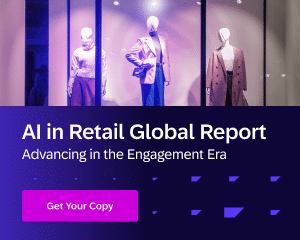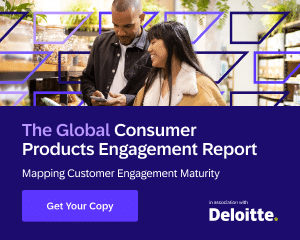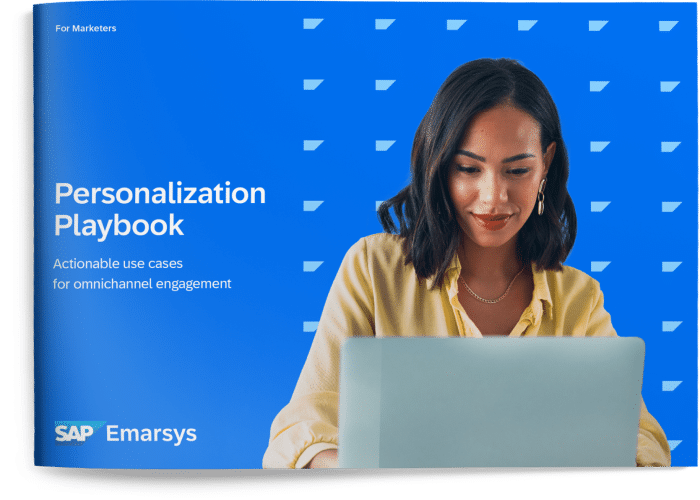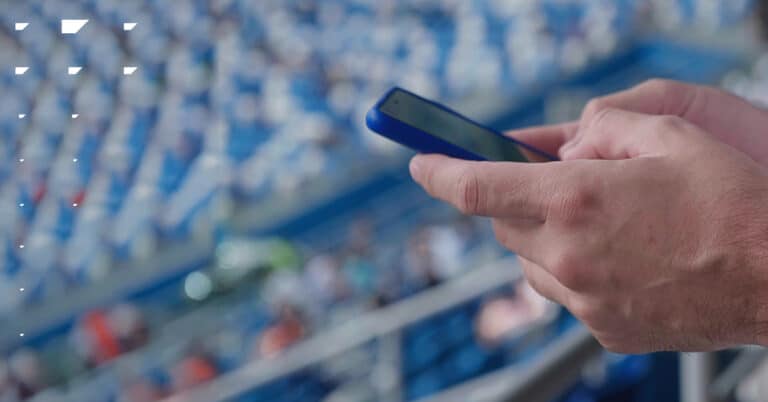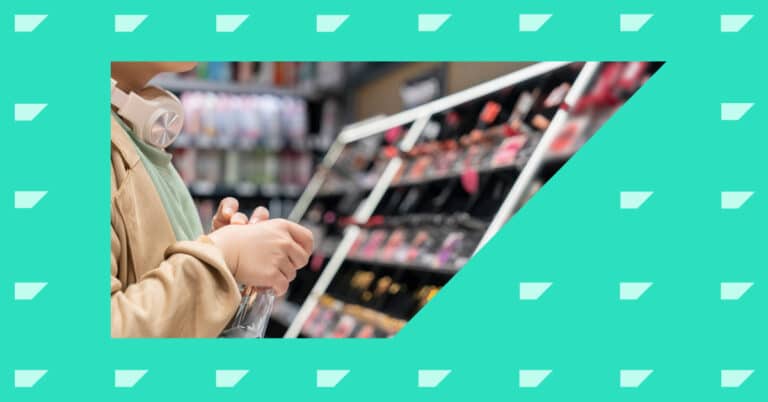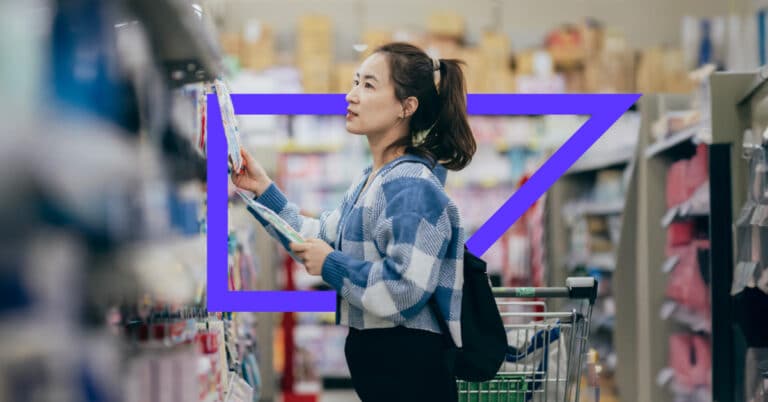Table of Contents
What is Customer Lifecycle Marketing?
Lifecycle marketing is the entirety of the experience, interactions, and content that your customers engage with for the duration of their time with your brand. They might be potential buyers, new customers, or lifetime evangelists.
Customer lifecycle marketing is one of the most undervalued overarching strategies for e-commerce companies, and it should be your priority in lieu of a hyper-focus on just acquisition or retention.
Retail and e-commerce brands, especially, know that lifecycle marketing requires intense attention to detail and devotion. Today’s consumer has a plethora of options, and people can choose to leave your brand just as easily as they arrived.
It’s a well-documented reality that acquiring new customers is more costly than growing existing business, and this notion underscores the value of nurturing, servicing, and helping customers get from point A to point Z — lifecycle marketing!
In this complete chapter guide to lifecycle marketing, we’ll teach you how to arrive at your desired goal with happy customers and a healthy profit margin.
Customer Lifecycle Stages
The customer lifecycle journey is a fluid, non-linear process — and is more complex than many simplified diagrams sometimes depict.
A traditionally accepted, over-simplified, linear understanding of the customer lifecycle typically looks something like this:
- Customer becomes aware of brand
- Customer does research
- Customer compares products and prices
- Customer buys
- Customer decides whether to return
This outdated simplistic view neglects to account for the intricacies of a complex B2C buyer’s journey. It also incorrectly implies that each step is separate and distinct from one another. This is not so.
In today’s multi-touch e-commerce world, these customer lifecycle stages need to be both expanded and understood to overlap and influence one another. The best approach to customer lifecycle marketing is to match your customers’ experiences with both reactive and proactive marketing strategies — that includes personalized content — at every stage when, where, and how customers interact in a truly channel-agnostic fashion.
How to Market to Your Customers at Each Customer Lifecycle Stage
Before investigating or implementing customer lifecycle management software, and before establishing any campaigns (or even your customer lifecycle strategy) you need to understand how your audience — each individual customer — thinks, acts, and engages with your brand. When a customer interacts with you, they aren’t consciously going to tell you, “I’m at stage X and want content Y at time Z.” They may not even know what stage they’re at or what content they need — they just want a seamless, magical, connected experience… and it’s your job to give it to them.
Creating this kind of connected experience isn’t easy, or everyone would be doing it. It requires careful planning, a thorough understanding of the customer, and the right technology to enable scalable, personalized marketing.
It’s only when you begin to map out, dissect, and better understand what your customer goes through that you can start to create a strategy — an experience — that truly aligns with each of those stages. The goal of this entire process is to increase database size, purchase frequency, cart value, loyalty, and CLV (a.k.a. conversions, customer retention, and revenue) by creating an experience that’s worth returning for. In order to turn one-time buyers into loyal customers, the interactions and messages you provide have to remain consistent, relevant, timely, and personalized. To do this at scale, you virtually have to leverage marketing automation technology to match content to the lifecycle stage.
You might notice that one key channel is the most effective in connecting with your customers at every stage — every touchpoint of the customer’s journey: email. With email at the core, you can deliver 1-to-1 interactions throughout the entire lifecycle and augment various touchpoints with other channels along the way. To start, though, email is the most reliable, dynamic, and easy-to-use channel. Permission-based emails, especially, give you uninterrupted access to an opted-in audience that wants to hear from you at every stage of the buying cycle. Holistic Email Marketing’s lifecycle marketing illustration depicts the flexibility of email quite nicely:
Related Content: How to Personalize Emails Throughout the Customer Lifecycle
Marketing to the Acquisition & Conversion Phase of the Customer Lifecycle
This phase is all about increasing website activity and database growth. You do this by getting meaningful conversions and driving first purchase using varying, but connected, techniques.
- Driving traffic. Boost traffic via referrals and social media advertising.
- Get conversions. Inspire visitors or anonymous audiences to sign up. Capture new subscribers — or even immediate buyers — from social media and your owned channels (website, mobile app). Always prompt new contacts (whether transactional or not) to also subscribe to your e-newsletter and set their expectations in your preference center.
Marketing to the Growth & Retention Phase of the Customer Lifecycle
The stage has been set! This phase is all about extending transactional propensity, building customer relationships, and inspiring existing customers to spend more and buy more frequently.
- Welcome new contacts. Orchestrate welcome email series/campaigns via email and your website for new subscribers.
- Get that initial transaction. Drive first-time online purchases and transactions.
- Remind those who didn’t quite convert. Create browse abandonment and cart abandonment campaigns — via email and the website — for contacts that browse or build carts without buying.
- First-time buyer to second-time. Driving one purchase is easy; ensuring that new customers’ return is tougher. Do this with strategic follow-up content.
- Post-purchase and repurchase. Post-purchase/repurchase campaigns should always be a part of your retention strategy — but especially for first-time buyers.
- Back in stock and price drop. Ensure customers are updated when their favorite items are available again or when these items go on sale.
- Execute promotional emails. Be certain to send promotional emails for anniversaries, birthdays, holidays, and apologies (if necessary).
- VIP and loyalty member programs. Show your customers the benefits of becoming a VIP.
Marketing to the Win Back Phase of the Customer Lifecycle
For customers who defect or decrease the frequency with which they buy, this phase is all about getting them to re-engage and remain loyal.
- Win back inactive and defecting customers. Win-back campaigns and subscriber reactivation communications remind customers of the value of doing business with you. You can also target inactive contacts via social channels.
- Replenishment. Reminders to reorder previously bought products can help to get customers to return to their cart and complete their order.
Customer Lifecycle Marketing Strategy: Delivering Personalization Throughout the Entire Customer Lifecycle
Having large amounts of customer data is great, but determining how to move forward and creating a strategy can be challenging. Personalization through modern marketing technology can help businesses achieve these goals by laying the groundwork for your customer lifecycle marketing.
Customer Lifecycle Marketing Step 1: Acquire and Convert New Customers
The first step in the lifecycle marketing process is to interest and engage new audiences — to drive acquisition.
Ultimately, retaining existing business means knowing your customers. This is easiest when you can gather your audience’s tastes, favorite styles, and desired communications via a preference center.
Then, you can use an amazing email newsletter as your vehicle for ongoing communication, where you can include personalized product recommendations, news, events, sales, discount offers, community- and user-generated content, and educational information.
Driving qualified traffic and engaging anonymous audiences means catching attention in new (social media, across the web, or even via your physical stores) and familiar places (retargeting existing contacts and using your owned channels to inspire your audience to engage). Instead of covering all of this groundwork here, check out these resources on driving traffic and generating conversions:
- How to Use Facebook Lookalike Audiences and Lead Ads to Drive Acquisition
- How CRM Ads Can Help You Retain More Customers
- 3 Ways to Drive Mobile Conversions to Make Brick-and-Mortar Shoppers Loyal Lifetime Customers [Plus Brand Examples]
- How to Convert Anonymous Web Visitors [5 Proven Methods]
- How to Convert Online Shoppers with Science, Strategy, & Style: Brian Massey [Podcast] #19
Savvy lifecycle marketers (that should be all of us) will tap into intelligent acquisition techniques including:
- Using the website as a strategic channel
- Leveraging multiple channels to grow their audience
- Lookalike social targeting to find new people who resemble existing database contacts
- Behavioral science
- Offline-to-online conversions
Customer Lifecycle Marketing Step 2: Grow and Retain Existing Customers
Once you get visitors to your website, the number one goal is to get them to convert, subscribe, sign up, or buy. Essentially, you want some of their information — at least an email address; at most a first-time hefty purchase and registration to receive all your communications.
This exchange of visitors’ personal information — whether just their email address or perhaps via progressive profiling, a more gradual collection of data over time — requires an implicit “value exchange.” With regulations like GDPR essentially raising the bar for “affirmative consent,” making it more difficult to earn customers’ personal data, you have to show new customers (a) how you plan to use their data, (b) the benefits of signing up, and (c) that you’ll continually deliver on your promise.
The growth phase is the meatiest and most important piece of the customer lifecycle puzzle. Let’s walk through the various kinds of communications that can and should happen from the instant a new contact enters your database.
► Welcome series. Welcome emails for newly registered subscribers should include an incentive to drive them toward their first purchase. They see, on average, 3x more transactions and revenue per email than typical promotional emails. They’re crucial because, for the most part, they’re your first real shot at making a meaningful first impression (aside from the initial interaction visitors had with your website or wherever they first heard about your company).
You should begin the relationship-building process with a welcome message almost immediately after receiving a new contact/email address, offering a customized discount to spur a purchase. The most effective welcome emails contain several aspects, which may include:
- Thanking the recipient for subscribing
- Offering whitelisting instructions
- Explaining the benefits of being subscribed
- Education and helpful material related to the brand
- Expectation-setting regarding frequency or cadence
- Helpful, relevant links
- Reassert your gratefulness for their attention
➤ Pro Tip: Set up an overlay on your website for newly added contacts who are also receiving a welcome email/series while they’re browsing and remind them of their discount.
Benefits of amazing welcome emails include reduced time until first purchase, increased lifetime value (LTV), boosted conversion rates, increased brand affinity, and long-term loyalty. Of course, the best-case scenario is that a new subscriber that has just received a welcome email will choose to take advantage and buy! In this case, you’d skip the next “step,” and, with your automation rules in place, you’d go on to include them in a first-time to second-time buyer campaign.
► Subscriber re-engagement. You should give those who subscribe but do not immediately buy a nudge after a defined amount of time. Do this by creating excitement with exclusivity, like inviting them to a private sale. You can also build a personalized email-to-web experience based on your subscriber’s brief behavior with your brand.
► First-time buyer (post-purchase). Congrats — the first purchase has been made! Now it’s time to send a post-purchase email to this segment of customers with personalized recommendations based on what they just purchased. You can also add an incentive to drive them toward their next purchase. The value of post-purchase emails for first-time buyers can’t be overstated.
“It’s a sad fact that many brands still struggle to convert customers from first-time to repeat buyers. Sadder still — many don’t even have a strategic goal to measure and optimize toward that goal. 70%-80% of a typical e-commerce business’ customers are single-order customers! Ensuring you optimize the post-purchase flow to understand the experience, build on the engagement and drive to the second purchase is perhaps the biggest problem in marketing. It’s also a problem that many brands aren’t even focused on.”
There’s a 27% chance of first-time customers returning, so giving them a reason to return is one of the most important things to focus on in your lifecycle marketing. Repeat customers are nine times more likely to convert than new customers and spend an average of 67% more when they have more than two years of loyalty with the brand. When it comes to post-purchase and post-first purchase, there are several good ways to give yourself that “little extra” that it might take to get first-time buyers to, well, buy again:
- Additional up-sell and cross-sell items. Bad post-purchase emails offer the same product customers bought — and more retailers are doing this than should be the case. Good post-purchase content includes material, offers, and information related to previous purchases, usually as recommended items.
- Seek feedback. Feedback is the single biggest category of qualitative (unstructured) data you can get. What better time to seek reviews or to share a brief survey than after a first-time purchase?
- Test engagement frequency. Timing of post-purchase up-sell and cross-sell emails differ depending upon industry, products, and mostly, the tendencies of individual customers.
Even after one purchase, you can begin to identify customers’ purchase patterns and behavior and drive them toward their second purchase to help them advance in their loyalty status.
Emarsys customer and fashion retailer, Luisaviaroma.com, saw a 37.5% increase in post-purchase campaign conversions. Outnorth, an outdoor Scandinavian clothing brand, saw a 25% uplift from first-time buyer programs.
Following up with first-time customers that recently bought is absolutely crucial — and arguably the most important piece of the retention puzzle to get right. Get ‘em in, get ‘em coming back, and keep ‘em loyal!
► Abandoned browse. Abandoned browse emails or exit intent overlays can be extremely powerful when used in the right capacity and with a non-pushy touch. Use them to target website visitors who were:
- Looking at different products or categories on your site but didn’t add anything to their cart
- Checking out specific products multiple times
- Frequently examining a variety of different products within a certain category
Expect a browse abandonment campaign to provide about half the revenue that your cart abandonment campaigns currently generate. While browse abandonment campaigns may have a lower conversion rate than cart abandonment campaigns (people browsing have a lower purchase intent at this stage than do people that begin building a cart), they do offer a larger volume of browsers to whom you can reach out.
Emarsys customer, Replacements, Inc., a supplier of fine chinaware, generated $26,000 in browse abandonment revenue in their first three months of implementing these campaigns (plus $101,000 in abandoned cart revenue in four months).
Related Content: How Replacements Achieved Abandon Cart Revenue of $100k in Four Months
► Abandoned cart recovery. Abandoned cart emails encourage contacts (who are in your system) to return to their basket to check out and offer a second chance to buy. To give yourself the best chance of converting cart abandoners, you’ll want to encourage this segment to complete their transaction with reminders and personalization across their favorite channels.
But why do online shoppers abandon carts in the first place? And what can you do to get these prospective buyers to convert? These are two of the biggest questions plaguing e-commerce teams across the globe.
Here are the top reasons people build carts but fail to check out:
- 34% were just looking and weren’t quite ready to buy.
- 23% had an issue with shipping,
- 18% wanted to compare prices.
When you hook up your website to your email program (e.g., with a unified platform), these emails can be fully automated (so there’s no need to think about them once they’re active) and can include dynamic incentives based on the value of the cart.
➤ Pro Tip: Time your discounts to maximize profit. The first email should be just a friendly reminder. Add your discount to the second email. Also leverage website overlays if a customer shows exit intent after building a shopping cart. If you do NOT have a visitors’ email address and they begin building a cart, your best bet is to set up and leverage browser/desktop notifications and ask permission after a few minutes of a person entering your website.
Emarsys’ abandoned cart automation will receive data from Web Extend tracking scripts and trigger an email 30 minutes (default time) after a cart is abandoned for known contacts. One of our top-performing client brands — a memorabilia product company — used cart abandonment campaigns to generate $14K in 30 days, so these campaigns can and typically do generate immediate return.
Related Content: How to Send Abandoned Cart Emails that Drive Revenue [Examples]
► Post-purchase and repurchase. Ah-ha! This is the Holy Grail of your retention marketing — and the real “meat” of the bell curve that is the lifecycle journey. Your job at this stage is to integrate everything you know about your customers to not only formulate a unified picture of each but to prove that you know who they are and what they need. Incorporate each of these elements throughout the entire journey.
- Predictions and recommendations. Whether as part of cross-sell or up-sell opportunities OR simply integrated/embedded within ongoing interactions (newsletter, website content, etc.), personalized product recommendations — tailored for the individual — complement your overall customer lifecycle marketing strategy.
- Up-sell. Leverage automation technology to maintain an awareness of when, where, and how customers are nearing purchase of a given item, and natively offer (don’t interrupt) several other, more high-value items whenever they interact with you.
- Cross-sell. Cross-sell opportunities can be used during and right after any transaction. Showcasing relevant recommended products using predictive marketing technology caters to individuals’ recent purchases to complement what they just bought.
- Time-sensitive offer. Create a sense of urgency with countdown clocks.
- Live CSS feed (Twitter, Instagram). Cross-promote your social channels to get subscribers and customers engaging with and following you on Twitter and Instagram.
- Feedback emails. Seeking qualitative/quantitative feedback is a great way to get first-time or repeat customers to share their experience with you. Include an open-ended form or a button/scale for customers to indicate the quality of their experience with you.
- CTA and new offer. It goes without saying — every follow-up email or e-newsletter you send, especially to those who have already bought, should include recommended products, offers, and a clear CTA.
► Back in stock and price drop. Some more savvy shoppers often use wish lists to save items for future sales. For these customers, you can send alerts via email and/or SMS (if they’ve opted-in) to let them know that their item’s price has dropped. You can select various predefined discounts to pull your customers back and drive them toward completing the purchase.
► Execute triggered, promotional emails. These emails take advantage of a milestone or event in your relationship with the customer.
- Birthdays. Who doesn’t love a wonderful discount coupon for their birthday? The aforementioned Outnorth saw a 270% uplift from Birthday campaign programs! The most effective birthday discounts utilize personalized codes (as opposed to one-size-fits-all).
- Anniversaries (with your company). A lot of retailers take advantage of anniversaries (one year, two year, etc.) of customer-hood. You can help loyal customers celebrate with custom emails.
- Holiday-related or seasonal emails. Celebrate in style — and provide seasonal availability or hours information.
- Product or brand announcements. If you want a quick and efficient way to communicate company updates or announcements, reach out to opt-ins via one-off emails (this is one case where mass emails might make sense!).
- Apology (for mistakes or accidental incidents) emails. You hope mistakes never happen, but sometimes they do. Use your most effective channel — email, SMS, social media, etc. — or a combination to alert and inform customers to the best of your ability.
Related Content: The Truth About Email: Use it to Drive Experiences First & Conversions Second
Customers that frequently take advantage of these kinds of campaigns — who act on your promotions, respond to event-based messages, and post-purchase or cross- and up-sell campaigns — represent the epitome of retention marketing success. Take a step back here, because you’re doing something right. This segment knows, likes, and trusts your brand. These customers are willing to spend, and, if they haven’t yet, are most likely to remain loyal and may eventually become lifetime advocates.
➤ Pro Tip: One of the most important stages of the lifecycle is right now, between the repeat customer and the loyal (premium, VIP, etc.) customer. These customers are spending the most with you on a frequent basis. It’s not out of the question at this juncture to go out of your way to provide “above the top” or exceptionally personalized — even hand-crafted — experiences for this special segment. You’ve got them on the cusp of something amazing, so give it your all.
► Loyalty programs. Customers that sign up for customer loyalty programs obviously care deeply about remaining loyal to your brand. You’ve worked hard to earn their loyalty, so be sure to show these fans the amazing benefits of remaining a VIP member. The key is to communicate the unique value they’ll get given their higher status with your brand — showing them how close they are to getting their next reward, adding specialty product recommendations, or even inviting them to special events.
- Loyalty or VIP emails. Special campaigns (or even sporadic, ad-hoc single emails) often work well for VIP or loyalty program. Let these beloved buyers know that they are your most important customers, and offer them a personalized discount on their next order. You’ll likely see the order come sooner and have it be a bigger order than usual. These campaigns target your high rollers — the customers that may not buy often (or maybe they do), but who will more often than not go big when they buy.
If customers purchase repeatedly and in an even somewhat predictable pattern, you’re golden. They’re in, they’re happy, and they’re on the way to lifetime loyalty if not there already. But if they show signs of defecting — essentially going latent — then you’ve got a big opportunity to re-engage them with win-back campaigns.
Customer Lifecycle Marketing Step 3: Win Back Defecting and Inactive Customers
The growth stage is all about turning a first-time buyer into an active buyer by inspiring repurchase. Building segments for this third step, win-back, will only be necessary for the contacts whom you’ve identified as “inactive” or defecting with time. This will not include all of your customers (your most loyal, frequent buyers, and your high-spenders, for example, won’t be included), but at some point, the majority of your contacts will likely require some work to re-engage.
Inactive indicates a lack of purchasing, but not necessarily a conscious disinterest in buying. In short, these customers are being passive. Defecting customers, on the other hand, are actively choosing to discontinue their relationship with a brand. Using historical patterns of engagement and past purchase cycles, it is possible to predict when a customer is most likely to move from an inactive to a defecting stage of the lifecycle. This allows intervention with timely automated campaigns, designed to reactivate customers and prevent defection.
Re-engagement campaigns are all about reinvigorating that spark that once existed when a customer purchased. If buyers are defecting or unsubscribing, don’t dwell — 25%-50% of customers become inactive, and brands lose an average of 25% of their mailing list annually.
Luckily, you have several options when it comes to defective or inactive contacts. You can:
- Delete or unsubscribe them entirely from your list. This option isn’t ideal.
- Take them off any main lists, and instead include them only on sporadic or specific one-off emails.
- Test variations of re-engagement (e.g., “We miss you!”) emails to get them to confirm opt-in status and interest. When executing strategically, this is the best option.
- Create strategic, full-scale re-engagement campaigns. Multichannel GDPR re-permissioning campaigns might fall into this category.
Ideally, you’d be able to devote a concerted, dedicated, planned amount of effort to put your best foot forward to regain attention and earn this segment’s business once again. To avoid losing inactive customers to the abyss, these campaigns must be creative, clear, and concise, reassert your benefits, and inspire action.
Win-back campaigns can come in a variety of shapes and sizes, including:
- Inactive customer win-back. Show your once high-value customers how much they mean to you with a special offer. These campaigns acknowledge that while the recipient once bought from you, they seem to have gone cold. Attention-grabbing copy and a nice discount often does the trick.
- Defecting customer win-back. This segment of customers is showing tell-tale signs of leaving and never coming back — making purchases less predictably, buying much less, or making returns often. GolfOnline, an online supplier of golf accessories and an Emarsys customer, saw a 160% uplift from defective buyer win-back programs.
- Subscriber reactivation. Subscribers are buyers waiting to happen! When they go inactive, it behooves you to try and win them back with re-permission campaigns.
- Replenishment marketing. Gain an understanding of when customers are likely to run out of items/supplies they once bought, and build strategies to help them reorder more.
- Social retargeting. Coming full circle, social ads (which we alluded to in Step 1, to attract “lookalike” audiences) can be used for effective retargeting in a number of cases, especially winning back customers with relevant retargeting. Additionally, it’s at this point you can start to, in controlled doses, work with other channels to reach people who aren’t responding elsewhere.
Within our automation platform, fields predict the last session date and predict last purchase date to give you a good indication of when customers are beginning to defect. Combine them with predicted last purchase categories to offer targeted, relevant incentives specifically geared to re-engage. Inactive and defecting customer campaigns can be thought of as a sort of last-ditch effort to earn back the business of contacts.
The Benefits of Customer Lifecycle Marketing
The main goal of customer lifecycle marketing is to provide the customer the best buying experience possible to ensure they keep coming back for more. When your customers are effectively nurtured every step of the way, your business will start seeing the benefits.
- Increased Customer Engagement: Moving customers through the lifecycle allows you to retrieve and retain customers no matter where they may be within their lifecycle. This could mean converting first time customers, driving a repeat purchase, or getting them to join your loyalty program. Enticing them with personalized recommendations, promotional emails, and push notifications are all different ways to entice the customer to keep engaging.
- Driving Customer Loyalty: Consistently communicating with your customers and developing that personal relationship is what drives customer loyalty. Supporting and nurturing them keeps them engaged and makes them feel good allowing them to form a bond with your brand. Loyal customers bring in consistent revenue which is important for your company’s success.
- Diminishing Acquisition Costs: The well-known reality is that acquiring new customers is far more costly than growing existing customers. Existing customers have already expressed interest in your brand and therefore become an easy target. Putting in the effort to drive that repeat purchase or re-engage inactive customers will allow your company to save time and money.
- Optimizing Customer Lifetime Value: With all of these benefits in mind, your loyal customers will become more and more valuable to your business. They will continue to engage, convert, and save your company time and money. This means long-term profit and security.
Bringing it All Together
Customer lifecycle marketing itself is a long journey that can’t be achieved overnight or in one fell swoop.
It is both required and requires a LOT — investment in customer/persona mapping, people, processes, and technology and the seamless amalgamation and alignment of them all.
Modern customer lifecycle marketing strategies will encapsulate the following steps and measures:
- Acquire visitors and get them to opt-in, sign up, or register
- Convert those contacts to customers by spurring purchase
- Grow the pool of customers both in size and value (revenue)
- Retain existing business with timely, personalized messaging
- Win back defecting or inactive customers with incentives and more
Successful customer lifecycle marketing approaches will capitalize on every stage of the customer’s journey by matching each with marketing techniques that move them along to the next stage… until ultimately customers become loyal, lifetime buyers, and brand advocates.
Avoid fragmented, disconnected customer experiences, and help your customers stay on track for their entire journey, delighted by your excellent in-transit interactions, speedy and seductive service, and unparalleled personalized marketing.
If you’re interested in learning more about creating compelling customer experiences across your customers’ entire lifecycle with an industry-specific solution that literally knows what works for your vertical and customers, I highly recommend checking out how Emarsys can help — and grabbing a quick demo.
Handpicked Related Content:
